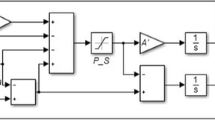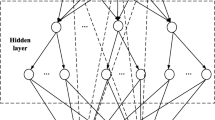Abstract
A novel Least Cumulants Method is proposed to tackle the problem of fitting to underlying function in small data sets with high noise level because higher-order statistics provide an unique feature of suppressing Gaussian noise processes of unknown spectral characteristics. The current backpropagation algorithm is actually the Least Square Method based algorithm which does not perform very well in noisy data set. Instead, the proposed method is more robust to the noise because a complete new objective function based on higher-order statistics is introduced. The proposed objective function was validated by applying to predict benchmark sunspot data and excellent results are obtained. The proposed objective function enables the network to provide a very low training error and excellent generalization property. Our results indicate that the network trained by the proposed objective function can, at most, provide 73% reduction of normalized test error in the benchmark test.
Similar content being viewed by others
References
S.Ergezinger and E.Thomsen, “An accelerated learning algorithm for multilayer perceptrons: optimization layer by layer”, IEEE Trans Neural Networks, Vol. 6, No. 1, pp. 31–42, 1995.
Y.F.Yam and T.W.S.Chow, “Accelerated training algorithm for feedforward neural networks based on least squares method”, Neural Processing Letters, Vol. 2, No. 4, pp. 20–25, 1995.
S.Geman, E.Bienenstock and R.Doursat, “Neural networks and the bias/variance dilemma”, Neural Computation, Vol. 4, pp. 1–58, 1992.
F.Girosi, M.Jones and T.Poggio, “Regularization theory and neural networks architectures”, Neural Computation, Vol. 7, pp. 219–269, 1995.
A.N.Tikhonov and V.Y.Arsenin, Solution of Ill-Posed Problems, W.H. Winston: Washington, DC, 1977.
D.S. Chen and R.C. Jain, “A robust back propagation learning algorithm for function approximation”, IEEE Trans. Neural Networks, Vol. 5, No. 3, pp. 467–479.
V.D.A.Sánchez, “Robustization of a learning method for RBF networks”, Neurocomputing, Vol. 9, pp. 88–94, 1995.
A. Weigend, D. Rumelhart and B. Huberman, “Generalization by weight elimination with application to forecasting”, in R.P. Lippman and J. Moody (eds) Advances in Neural Information Processing III, pp. 875–882, Morgan Kaufmann: San Mateo, CA.
C.Svarer, L.K.Hansen and J.Larsen, “On design and evaluation of tapped-delay neural network architechtures”, Proc. of IEEE International Conference on Neural Networks, San Francisco, pp. 46–51, IEEE Press, New York, 1993.
C.L.Nikias and A.P.Petropuou, Higher-Order Spectra Analysis: A Nonlinear Signal Processing Framework, Prentice-Hall: Englewood Cliffs, NJ, 1993.
J.M.Mendel, “Tutorial on higher-order statistics (spectra) in signal processing and system theory: theoretical results and some applications”, Proc. IEEE, Vol. 79, No. 3, pp. 278–305, 1991.
C.L.Nikias and M.R.Raghuveer, “Bispectrum estimation: a digital signal processing framework”, Proc. IEEE, Vol. 75, No. 7, pp. 869–891, 1987.
G.B.Giannakis and M.K.Tsatsanis, “A unifying view of cumulant and polyspectral measures for nonGaussian signal classification and estimation”, IEEE Trans. Information Theory, Vol. 38, pp. 386–406, 1992.
C.T. Leung and T.W.S. Chow, “A fourth-order cumulants based robust backprogation algorithm”, Neural Computation (submitted).
H. Tong and K. Lim, “Threshold autoregression, limited cycles and cyclical data”, J. R. Stat. Soc., Vol. 42, pp. 245–292.
G.Deco, W.Finnoff and H.G.Zimmermann, “Unsupervised mutual information criterion for elimination of overtraining in supervised multilayer networks”, Neural Computation, Vol. 7, pp. 86–107, 1995.
A.C. Tsoi, “Single layer perceptron”, Lecture Notes on Neural Network, Department of Electrical and Electronic Engineering, University of Hong Kong.
Author information
Authors and Affiliations
Rights and permissions
About this article
Cite this article
Leung, CT., Chow, T.W.S. & Yam, Y.F. A least third-order cumulants objective function. Neural Process Lett 3, 91–99 (1996). https://doi.org/10.1007/BF00571682
Issue Date:
DOI: https://doi.org/10.1007/BF00571682




